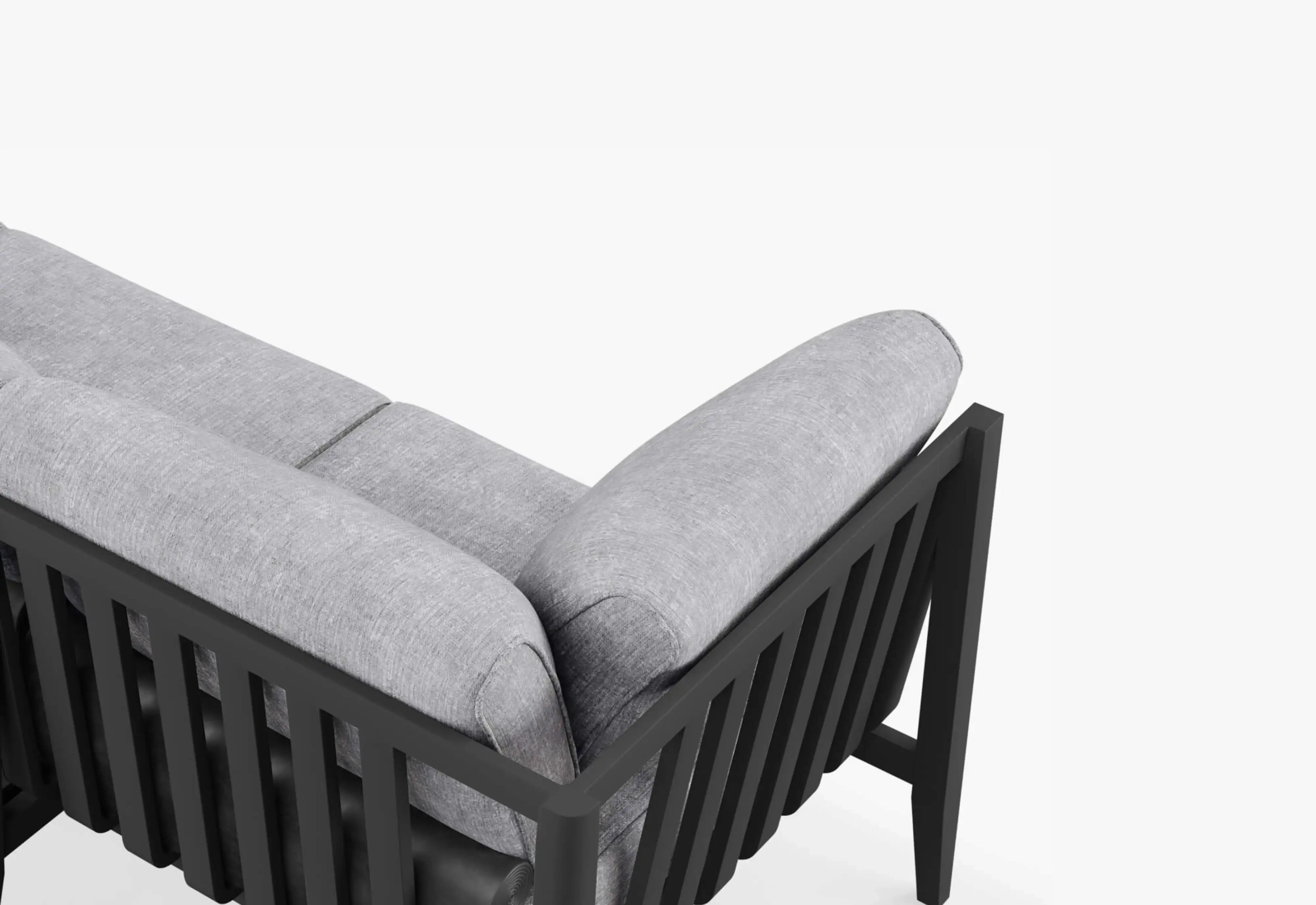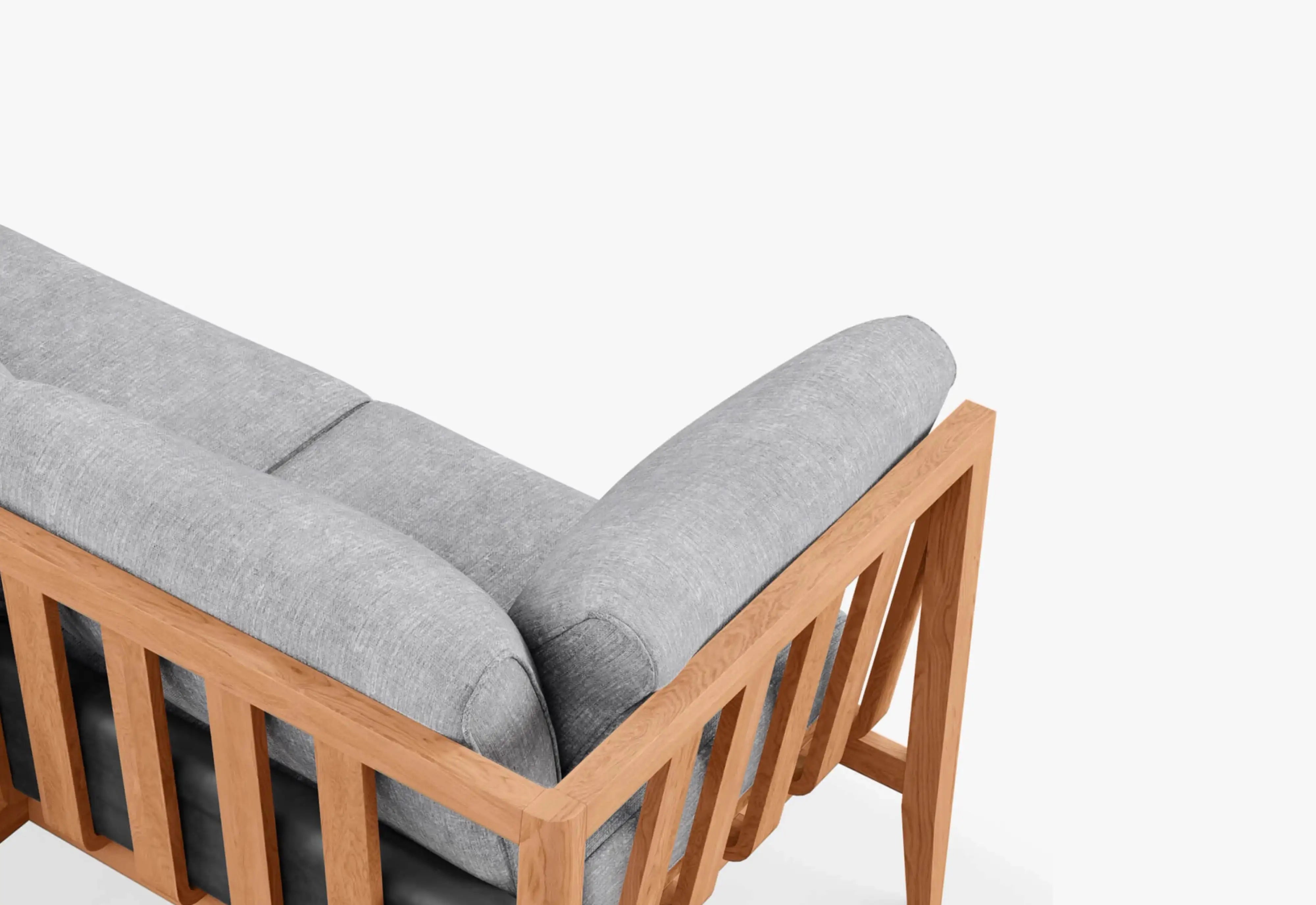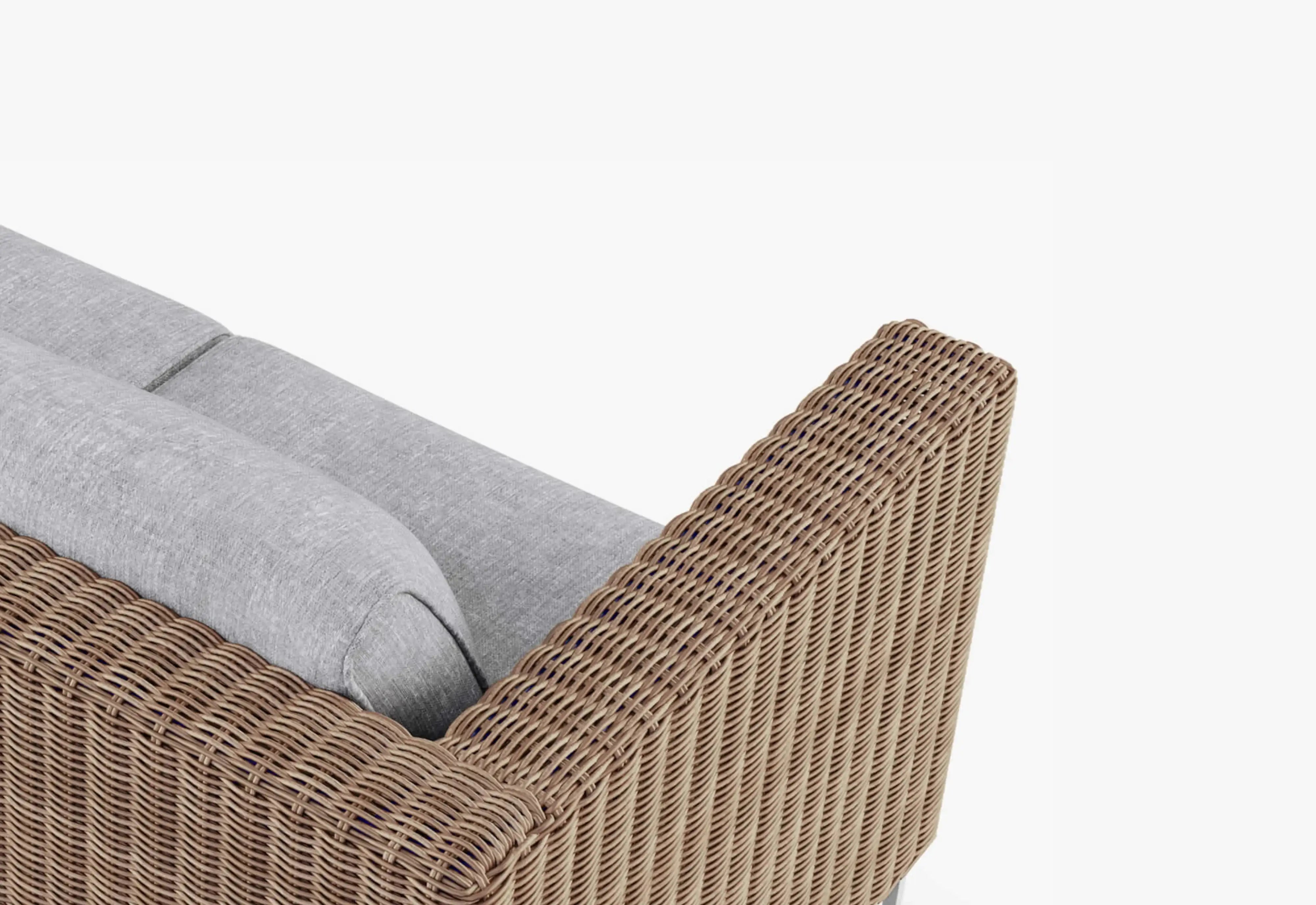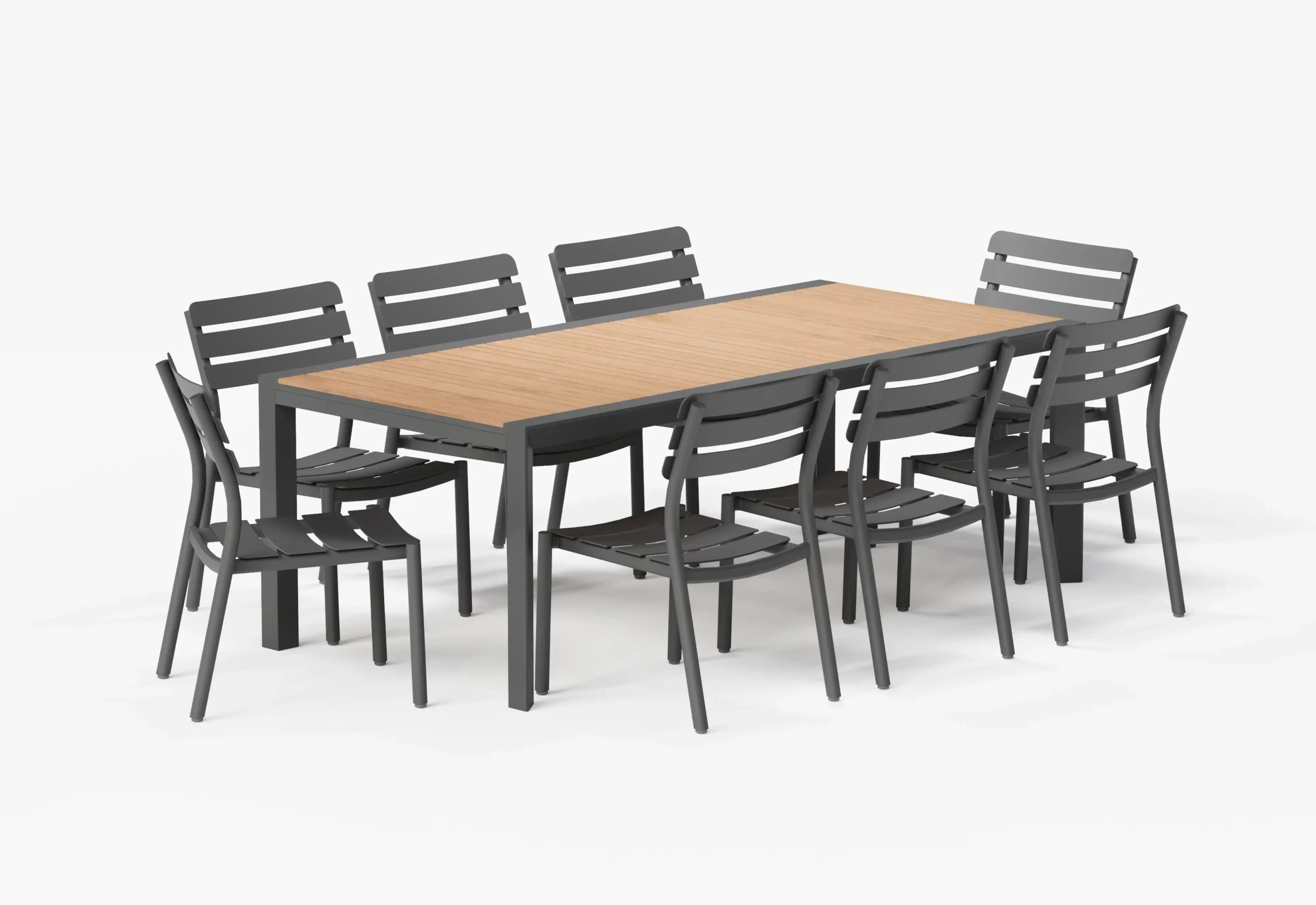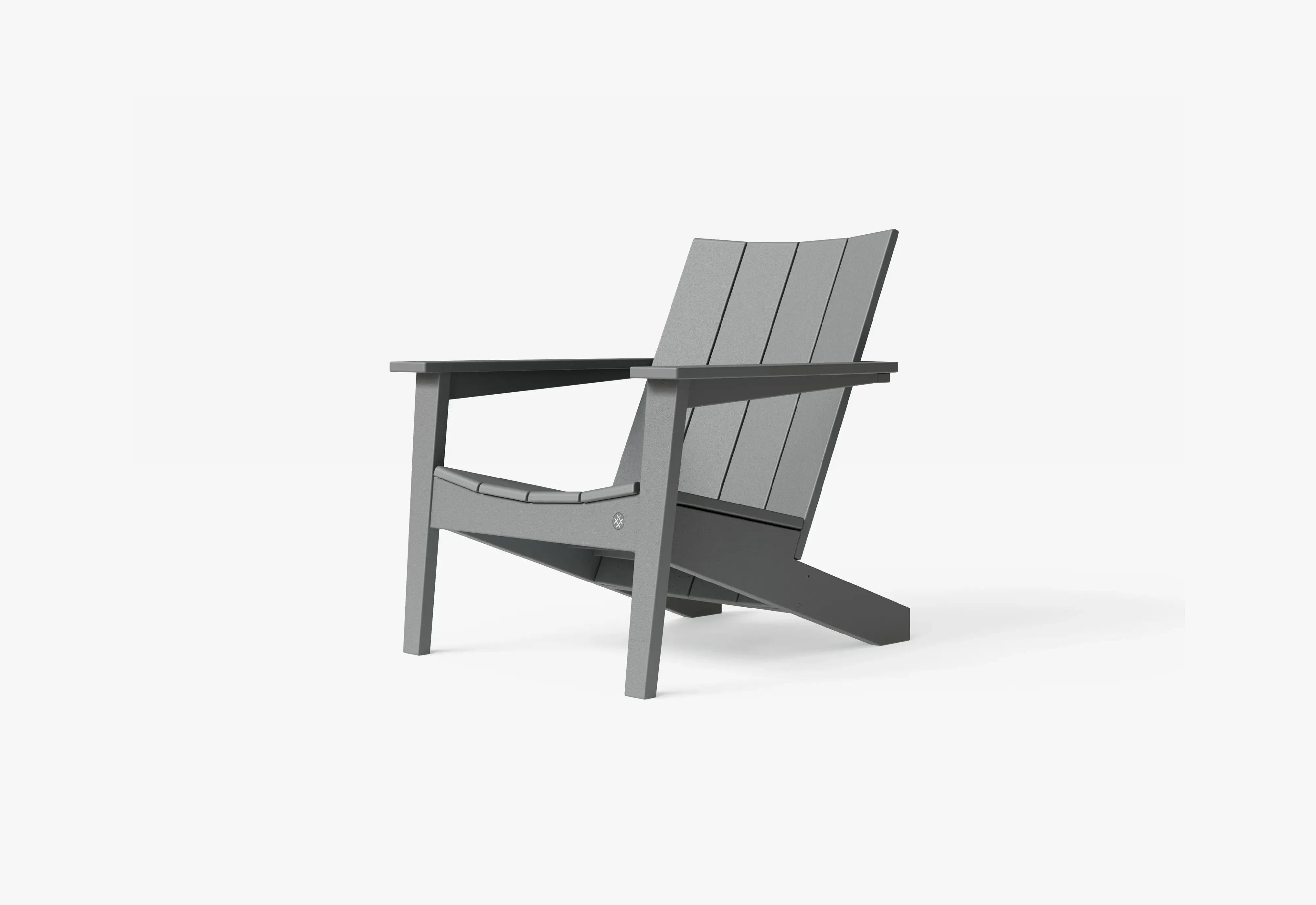Rattan Vs. Wicker Vs. All-Weather Wicker: What's The Difference?

Finding the best option for your outdoor furniture can be difficult with so many choices. Adding to this is the fact that some options — like rattan vs. wicker — end up causing even more confusion. So, what’s the difference, and what’s the best wicker to choose?
In this article, we’ll discuss all things wicker so you can make the best decision for your outdoor space.
Rattan Vs. Wicker
It’s not uncommon for two things generally associated with each other to be interchanged during conversation. For example, countless people refer to tissues as “Kleenex” without ever thinking about them being just one brand.
Rattan vs. wicker is another example of terms that have become interchangeable over time. However, there is a differentiation: rattan is the material; wicker is the weaving method that creates wicker furniture.
Of course, it’s not entirely this simple. Not all wicker furniture is made from rattan, and even rattan itself is comprised of over 600 species. Plus, other materials will provide drastic differences in the appearance and overall structure of the final product.
At Outer, we understand how important it is to know exactly what’s in the product you’re buying and whether it’s the best available option. So first, let’s look at what rattan and wicker are and what sets them apart from each other.
Rattan

Commonly found in the tropical regions of Asia, Africa, and Australia, rattan is a species of palm known for its high-climbing tendencies. During its earliest documented use, rattan became popular due to it being easier to grow, harvest, and transport compared to timber.
The light, durable, and flexible nature of rattan made it convenient for a range of items, the most notable of which is the wicker basket that can be found in some form in almost every home today.
Wicker
Even as furniture, wicker has been around for thousands of years, but it wasn’t until the Victorian Era in Europe during the 1800s that the trend of wicker furniture caught global attention.
Again, wicker was a technique long before it was a name for furniture. And the particular style of wicker takes strong and flexible materials, such as rattan, and weaves them into the stunning designs we know today.
As wicker’s popularity shifted, grew, and eventually reached the U.S., rattan slowly stopped being the material of choice to produce wicker furniture. With many materials to pick, the name for the weaving process has permanently latched onto the name of the furniture.
Natural Vs. All-Weather Wicker

Once the rattan vs. wicker debate has been settled, the question of other wicker materials comes into question. Are the newer materials better suited for the outdoors? Are they safe for the environment? What are the differences between natural and synthetic wicker materials?
Let’s take a look.
Natural
Someone browsing any number of marketplaces at random will find a variety of natural and human-made materials comprising the wicker they see. From furniture to baskets to hats, both types are still commonly used today.
Natural wicker is considered to be any wicker product made from plant materials. Rattan, of course, falls into this category, as does bamboo, reed, and willow. The disadvantage that arises from natural wicker is when it’s used for the outdoors.
Plant-based wicker is great for the indoors, but the natural materials are not designed to withstand years of the elements, like heavy rain, harsh sun, and snow. Over time, these organic products will crack and break, which is not ideal for something you’ll be sitting on.
Synthetic Resin
Enter: all-weather wicker. When it comes to protecting furniture from any conditions, this human-made synthetic wicker is made from resins extracted from plant matter and designed to permanently harden.
This resin is often considered “weatherproof,” and for good reason. The material protects against fading, rain, snow, and anything nature can throw its way. That’s why we offer worry-free warranties on our weather-ready wicker furniture here at Outer.
Which Is Better?

The question of whether natural or synthetic wicker is better depends on how it will be used and the company that the product is purchased from. Here are a few things to consider.
Indoor Vs. Outdoor Use
In terms of indoor use, natural wicker is a perfectly safe choice since it’s not at risk of outside damage. For the outdoors, however, all-weather wicker is the clear winner for its durability and protection against the elements.
Environmental Concerns
Another consideration between these two options is which is better for the environment. Not all companies develop wicker the same, but here at Outer, we are always keeping our planet and future generations in mind.
Our All-Weather Wicker is made of 30% recycled materials and is 100% recyclable at the end of its long lifespan, so customers can rest easy knowing that their purchase is a responsible design contributing to a more sustainable future.
Comfort
Anyone who has sat on a wicker chair, natural or synthetic, has faced a pretty universal truth: Wicker isn’t very comfortable on its own.
Determining which is more comfortable depends on the cushion it comes with rather than the woven material. All too often, companies will offer a durable wicker base, but they’ll pair it with a cheap, less-than-ideal cushion with a simple polyester filling.
Choosing furniture from Outer, on the other hand, means getting multi-layer memory foam cushions for luxurious, premium comfort. It’s why we’re confident in offering the world's most comfortable outdoor cushion.
Benefits Of All-Weather Wicker

All-weather wicker is a gift that keeps on giving. Not only is it able to withstand the aggressive outdoors, but it’s also efficient for modular designing and easy to care for.
Durability
While looking exactly like natural wicker in appearance, synthetic wicker offers the added advantage of being incredibly durable.
Especially when compared to its natural counterpart, the lifespan of synthetic wicker, when used outside, is unbeatable. This is because, like most organic matter, natural wicker biodegrades quickly in an outdoor environment.
Resistance To Fading
Another benefit is that all-weather wicker takes significantly longer to fade than natural wicker. An important note is while synthetic wicker is fade-resistant, it’s not fade-proof. When left out over time, synthetic wicker will also start showing signs of fading.
The best way to ensure your wicker furniture has the longest lifespan possible is to protect it with an All-Weather Cover when not in use. Our All-Weather Cover is designed to fit your furniture like a finely tailored suit while adding incomparable outdoor protection.
The included wind straps buckle your furniture down to keep it safe against harsh winds, and vents on the back of the cover keep water out while allowing airflow to prevent heat and moisture from building up beneath.
Low Maintenance

Taking care of everything in the backyard can be time-consuming. All-weather wicker pulls double duty by being a stylish addition to any yard while requiring absolute minimal maintenance.
Aside from vacuuming or brushing off any debris that gets trapped between the strands of wicker, cleaning your wicker furniture at the end of the season is as simple as rinsing the frame and rust-proof stainless steel legs thoroughly with a hose and allowing it to air dry.
For more details on cleaning wicker and your Outer cushions, click here.
Moisture Resistance
Resin is a material that efficiently sends water running off the sides of wicker furniture. Even through brutal storms and high humidity, all-weather wicker holds its shape to provide style and comfort for every season or forecast.
But just like wicker’s resistance to fading, the outdoor furniture is not 100% impermeable against water. Covering your furniture and/or storing it indoors in the off-season can add years to the lifespan of your favorite outdoor wicker sofa.
Lightweight Design
Finally, wicker’s naturally lightweight structure makes it easy to move around for any number of configurations. And Outer’s modular design means giving your backyard a new style can be done again and again without having to buy new furniture.
Choose The Right Wicker With Outer

While natural wicker is a terrific option for the indoors, it’s just not durable enough to withstand the elements like synthetic wicker. Caring for your outdoor wicker furniture and keeping it functional longer means opting for the all-weather choice.
Whether it’s an Outdoor Loveseat for a relaxing date night or a 7-person U Sectional to accommodate every party guest, Outer has the perfect wicker options for every outdoor event.
From our timeless beige to our new sleek and sophisticated black, shop our wicker selection today and find the All-Weather Wicker that works best for your backyard oasis.

